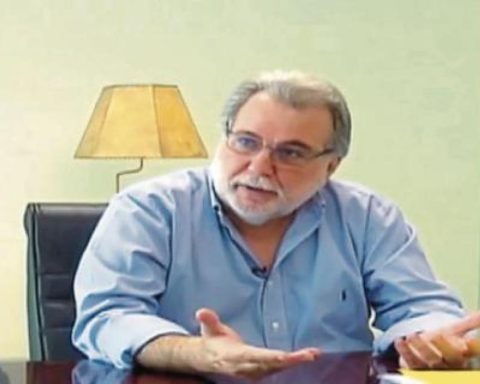the minister of Foreign Trade and TourismRoberto Sánchez, affirmed today that the Peruvian government will work in a multisectoral manner to boost production and exporter of the chain cotton and Peruvian textiles.
This was revealed after participating in a work meeting attended by the Minister of Agrarian Development and Irrigation, Óscar Zea, the Minister of Production, Jorge Luis Prado, as well as regional authorities, producers and cotton growers from Piura.
In this sense, he pointed out that national cotton is an emblematic crop of Peruvian agriculture, with an important presence in the coastal valleys, and has a key role in regional economic development and in the Peruvian textile-clothing chain. Therefore, it is necessary to carry out a productive industrialization corridor between the three sectors (Mincetur, Produce and Midragri).
LOOK: Meeting tourism would generate S / 42 million this year, Mincetur estimates
For example, according to estimates, crop plantings for this campaign are mainly concentrated in Ica (38.0%), Piura (16.0%) and Lima (9.9%). In addition, exports of this product, in 2021, reached US$ 24,315,782 in the presentation of cotton without carding or combing, carded or combed cotton, sewing threads, cotton yarns and fabrics.
Among other additional data, it can be mentioned that in 1990, 60,700 hectares of cotton were cultivated in the country. In 2020, 701 hectares were cultivated in Piura alone, as a result of the pandemic.
“Peruvian cotton and textiles are synonymous with recognition in the textile industry worldwide. Its quality makes it an important export product. For this reason, in the first link of the chain, we will work at the governmental level, with the participation of the regions, producers and cotton farmers, in a work agenda to join forces with the National Cotton Plan that Midagri has been promoting”, he indicated. Minister Sanchez.
The head of the Mincetur also affirmed that the presence of the ministers of State in Piura is a clear sign of the commitment of the President of the Republic Pedro Castillo with the entire cotton production and value chain, where the thousands of farmers stand out along with their families.
“Thus we can also highlight the Second Agrarian Reform, a government policy, led by our head of state, which seeks to improve the services provided by the state entities that make up the agrarian sector to meet the demands of family farming producers. , seeking to reassess its contribution to the food and nutritional security of the country, as well as to economic development”, he commented.
SECTORAL ACTIONS
Minister Roberto Sánchez pointed out that there are various actions that Mincetur and Promperú have been carrying out in favor of the cotton-based textile value chain. This at the level of export development, market intelligence and trade promotion.
Thus, we can mention the implementation of strengthening programs for companies in the textile-clothing sector, workshops and training on potential markets and business opportunities, participation in international fairs, among others.
Additionally, he commented that through Promperú, in 2022, the commercialization of Peruvian textile products in international markets will continue to be promoted, where cotton will have an important participation.
“For example, through Promperú we will promote the promotion of the cotton value chain in various international fairs with the Peru Textiles brand. Thus, this year the participation of various companies in fairs in the United States, Mexico, Denmark, among others, is planned”, mentioned the head of Mincetur.
As recalled, Peruvian cotton stands out for its quality and recognition in the textile industry worldwide. Its different types or varieties are considered the best in the world, due to its high quality and the fine texture of its fibers. In addition, it has unique characteristics that make it recognized in the world of fashion and clothing.
IMPORTANT
During his presence in Piura, Minister Roberto Sánchez met with important representatives of the Trade and Tourism sectors of the region. Coordinated work with regions will boost economic reactivation.













